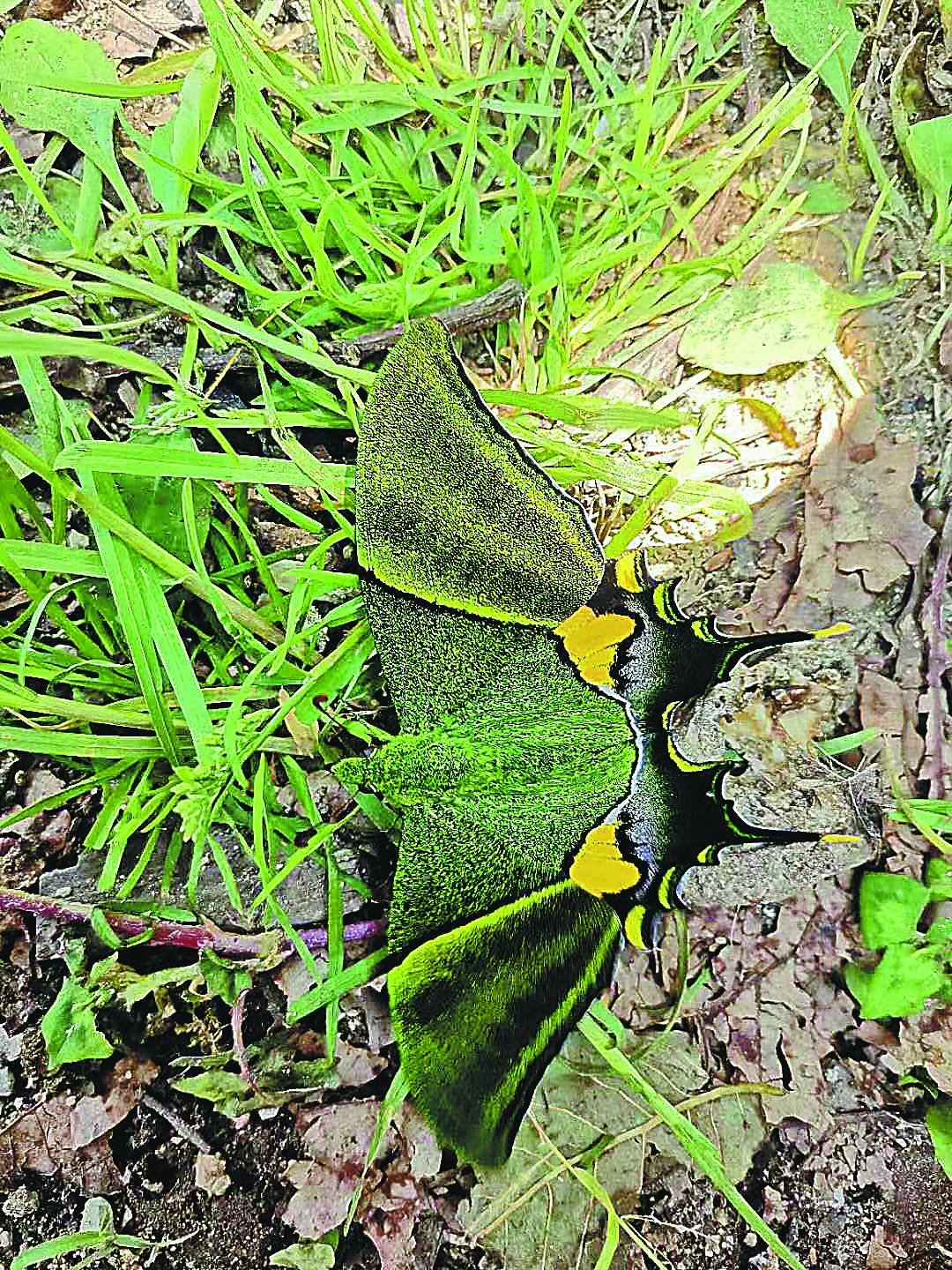July 1, 2022
BEIJING – Monthlong hatching in a valley in Yunnan is an annual display of beauty, but tourism must be handled carefully
The hundreds of millions of butterflies hatching in a valley in Yunnan province this month, an annual spectacle that gives the area its name, are the result of its climate and vegetation, experts said.
Located in Ma’andi town in the Honghe Hani and Yi autonomous prefecture, Butterfly Valley has the climate and kind of vegetation on which butterflies thrive, said Hu Shaoji, associate researcher at Yunnan University’s Institute of International Rivers and Eco-Security.
The Jungle Queen butterflies (Stichophthalma howqua and Stichophthalma suffusa) are the main species seen during the monthlong season. Its caterpillars feed on bamboo, which grows profusely in the valley, permitting their population to prosper, Hu said.
“The different elevations have created a variety of climates in a very small area, as well as great plant diversity. This results in habitats suited to a variety of butterflies that live off different plants,” he said.
Last year, the estimated population of Jungle Queens was 150 million, and this year it is over 100 million. For such a large population, the data can be interpreted as stable, he said.
Zhou Xuesong, a biodiversity conservation expert from the Southwest Forestry University, said that the climate in Butterfly Valley is sultry, and as warm, humid air rises over the mountains, it creates heavy rainfall. “These are the most suitable conditions for butterfly breeding and hatching,” he said.
Another reason for the abundance of butterflies in the valley is the lack of natural predators and other restricting factors, Zhou said, adding that follow-up surveys conducted by the university since 1998 showed that there were more than 400 species of butterflies in the valley. As a reference, many of the country’s provinces and autonomous regions have butterfly checklists of less than 400 species. “It is a typical place, home to diverse species. The butterflies there have evolved into many varieties and subspecies,” he said. “Also, our survey shows that the annual hatching of Jungle Queens is harmless to both the environment and humans.”

A male golden Kaiser-i-Hind butterfly, Teinopalpus aureus, is recorded in the valley. [YANG ZHENWEN/FOR CHINA DAILY]
Elsewhere in the province’s northwestern parts, including the river valleys of the Upper Yangtze, Lancang and Nujiang rivers, butterfly hatchings resemble those in the valley.
In southern Yunnan, butterfly hatchings are more frequent.
For example, in the Xishuangbanna Dai autonomous prefecture, billions of Common Emigrant (Catopsilia pomona), a medium-sized butterfly species named for its habit of migrating, gather on river banks in the summer, Hu said.
To protect diversity, Hu said that access to the valley needs to be limited. “Tourists entering the area must follow the rules, and catching butterflies is strictly forbidden. The Butterfly Valley Museum can also help educate people on nature and the importance of butterflies,” he said.
Yang Zhenwen, curator of the museum, said that joint efforts over the years on protection have allowed the butterfly population to stabilize.
According to Yang, the population of Jungle Queens was measured at about 109 million in 2016, and last year it rose to 150 million.
Zhou said: “Once destroyed, biodiversity cannot be renewed. So, protecting existing biodiversity in the valley is an important task that must be passed down from generation to generation.”


